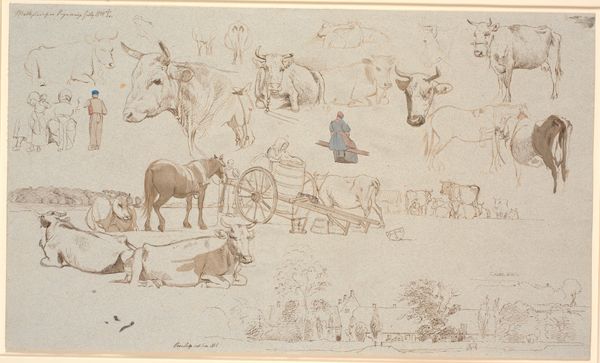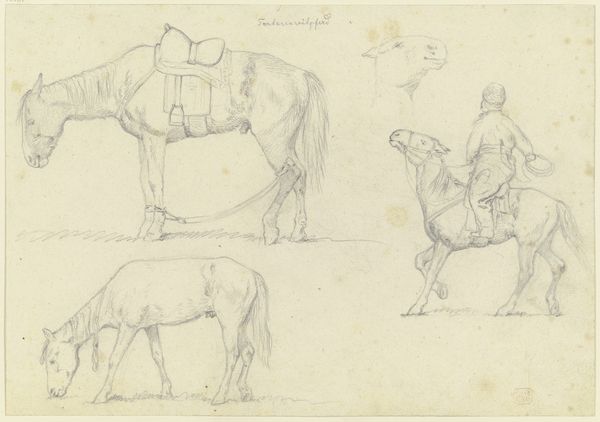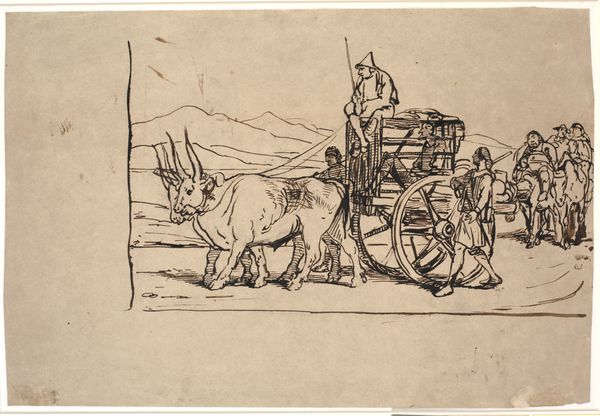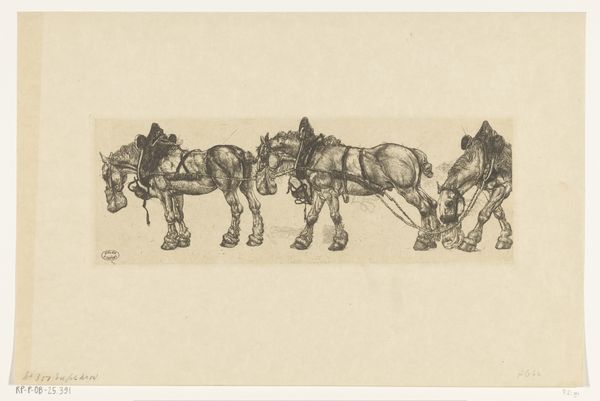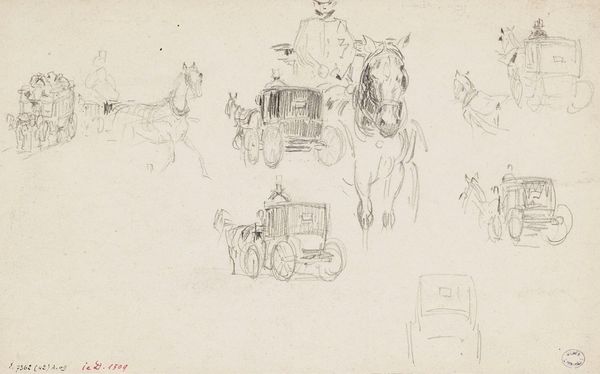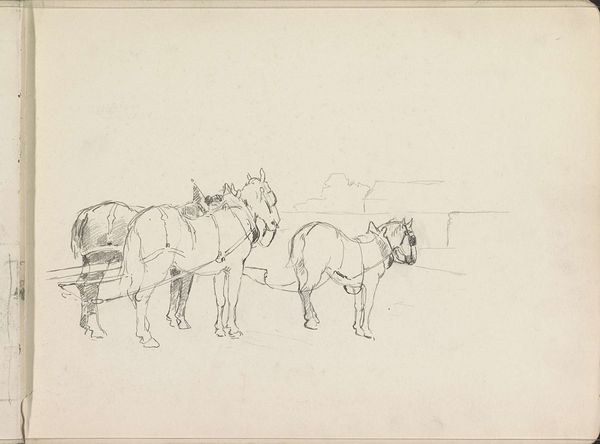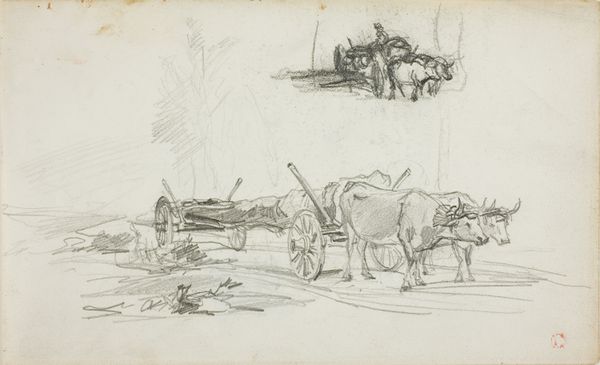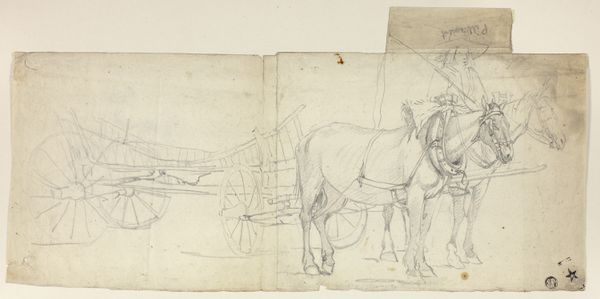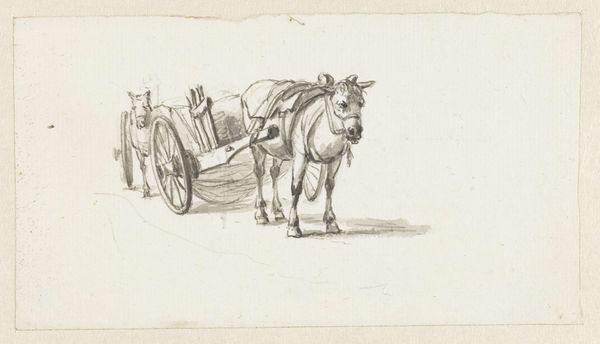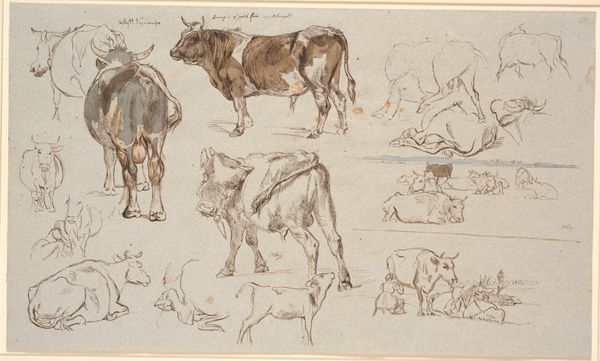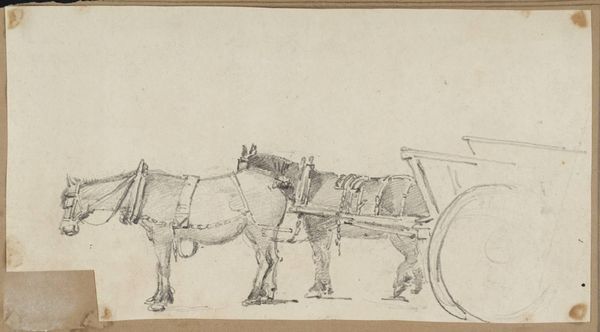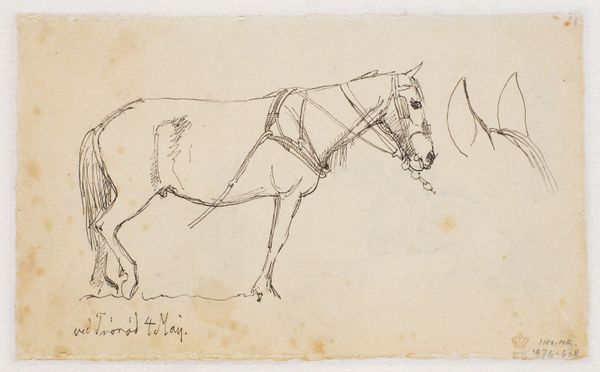
Studies of Slovakian Peasant Wagons with Oxen and Horses n.d.
0:00
0:00
drawing, paper, pencil, graphite
#
drawing
#
pencil sketch
#
landscape
#
paper
#
pencil
#
graphite
Dimensions: 143 × 195 mm
Copyright: Public Domain
Curator: This drawing offers a glimpse into the artistic process of Rudolf von Alt. It's entitled "Studies of Slovakian Peasant Wagons with Oxen and Horses," created with pencil and graphite on paper. What are your initial impressions? Editor: The scene feels remarkably unhurried. These animals and wagons are portrayed with what strikes me as both fragility and quietude. It really underscores their vital but frequently invisible labour. Curator: Notice how the artist arranges several studies on the same sheet. There's a central focus on an ox pulling a wagon, while other sketches showcase varying perspectives of similar subjects: the horses are rendered quite faintly compared to the oxen. Consider also the textures—the rough hide of the animals against the rigid structure of the carts. Editor: I agree that those oxen steal the show, and their comparative size with the other sketches serves to really make the viewer consider their function as beasts of burden in this societal structure, this feels deeply rooted in class differences. And this type of drawing makes those material and power conditions clear. It makes you consider ideas of the rural idyll as propaganda. Curator: Perhaps. However, the strength of line and contrast is used very sparingly. It strikes me instead that Von Alt has prioritised accuracy, representing their basic forms without any idealisation. This feels key to a study drawing. What do we learn from these formal relations alone? Editor: Yes, there's certainly a tension, a negotiation, at play in representing a group of agricultural laborers. Who is this drawing meant for and why? Does a focus on aesthetic features only make these peoples and these animals invisible again? Curator: But is it not through these features that we gain insights into both the skill of the artist and the forms themselves? Through line, composition, and arrangement on the page, von Alt investigates his subjects meticulously. To see and learn, must be aesthetic engagement, right? Editor: Right, and perhaps if we consider aesthetic engagement as a historical act in itself, and ask who and what its serves, we might get somewhere! Thank you for prompting a closer look, and at these formal techniques, because I certainly found myself more appreciative of their artifice.
Comments
No comments
Be the first to comment and join the conversation on the ultimate creative platform.
